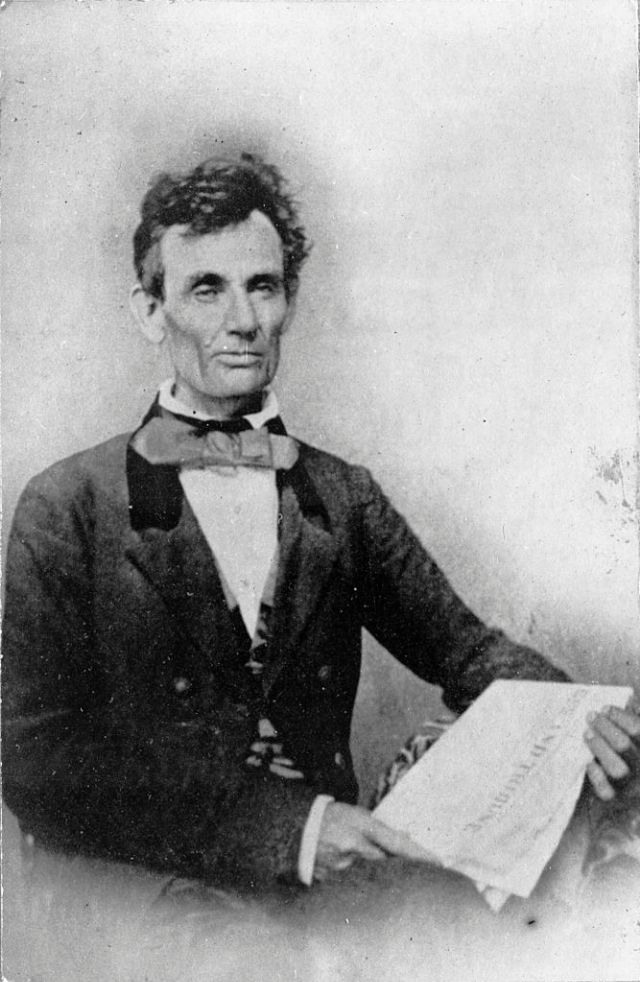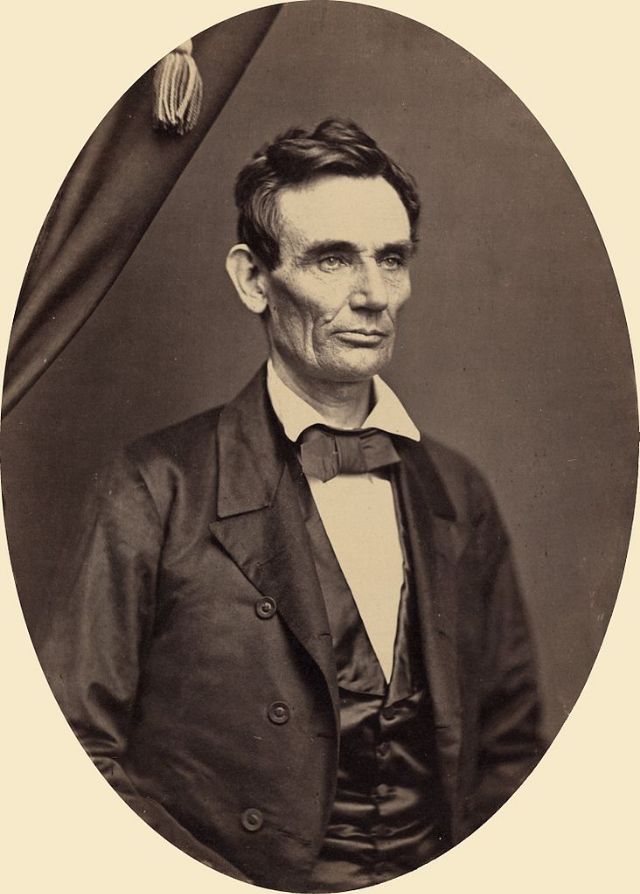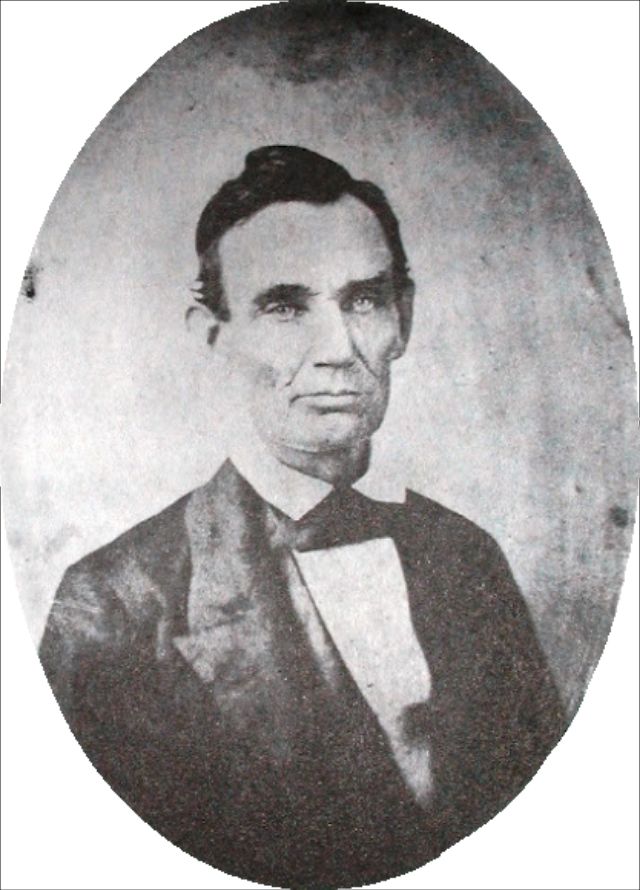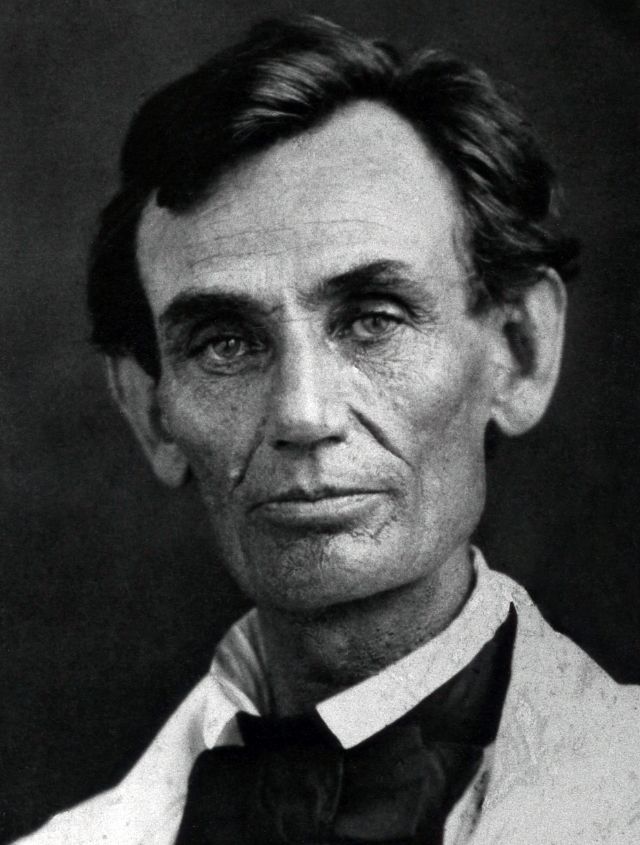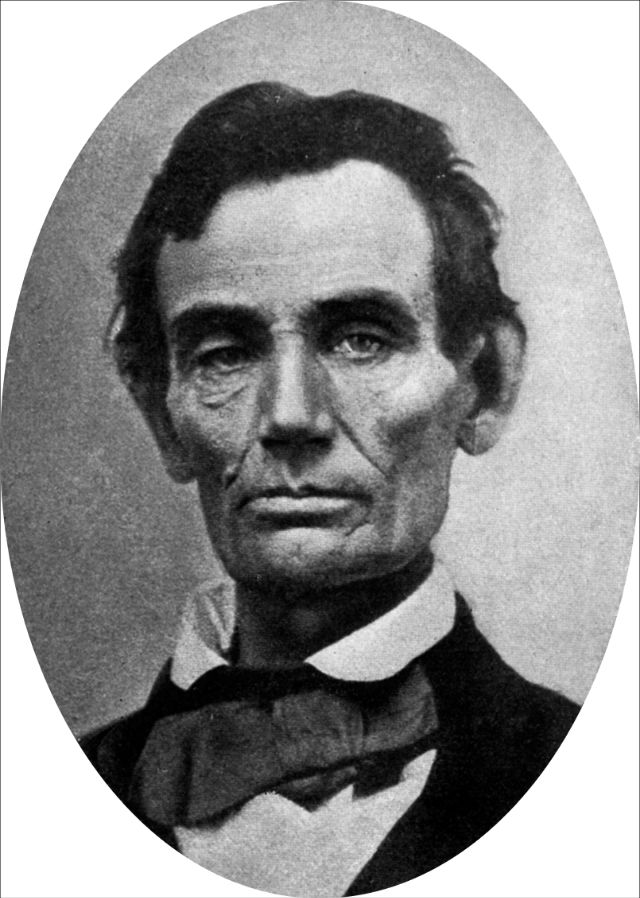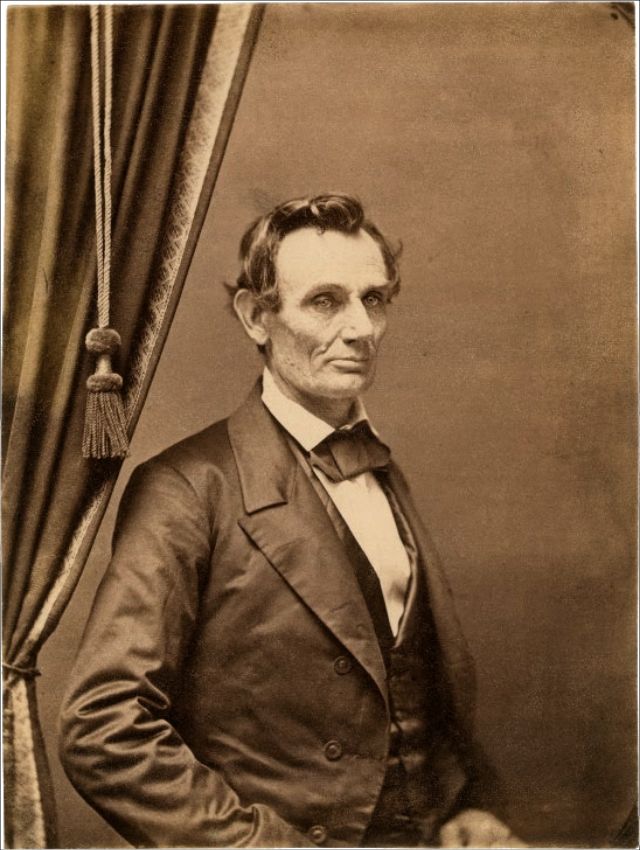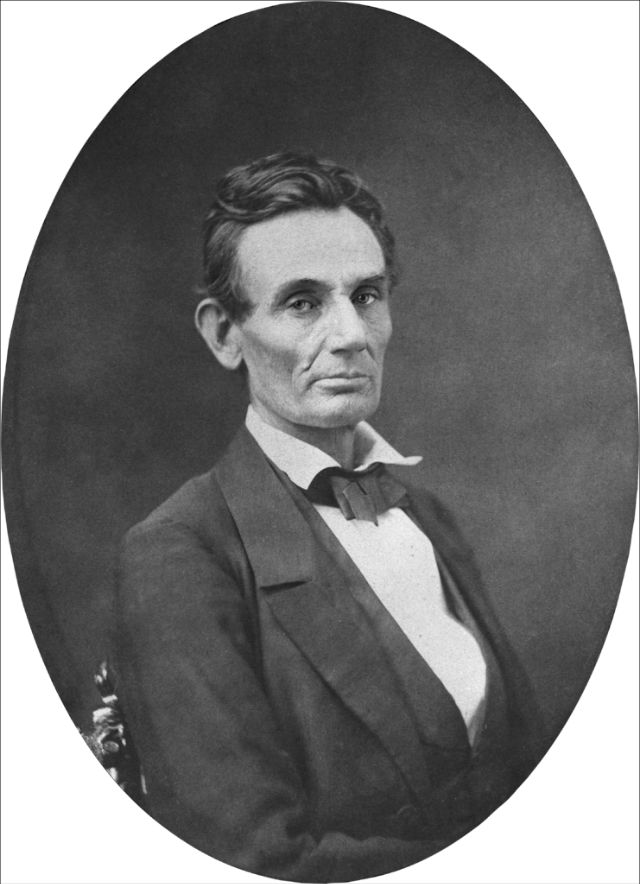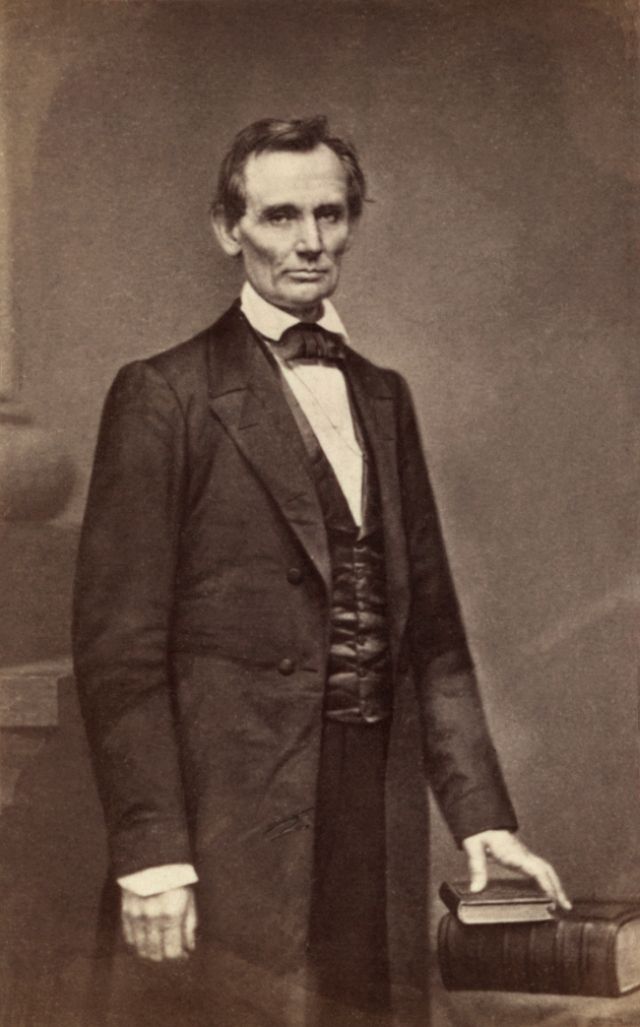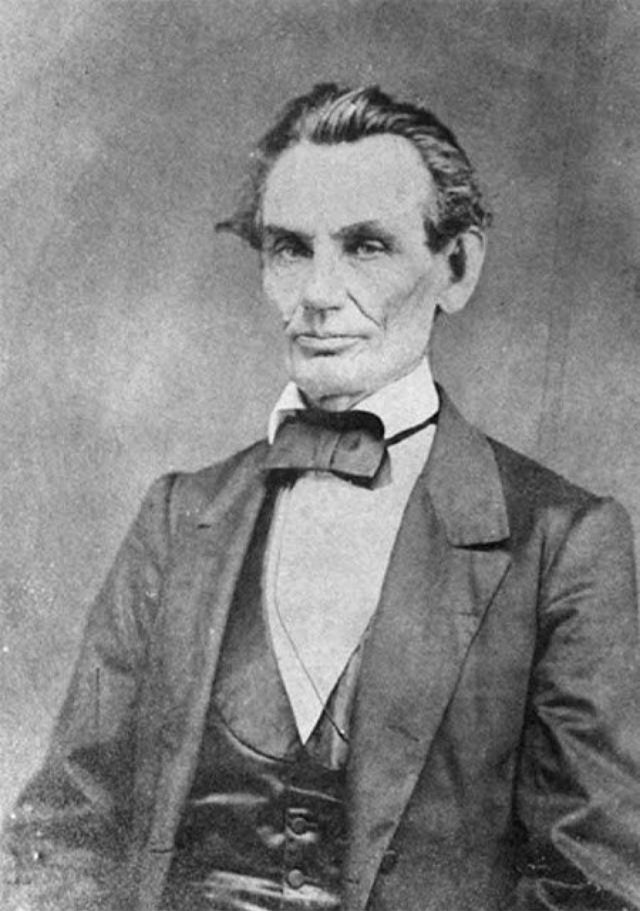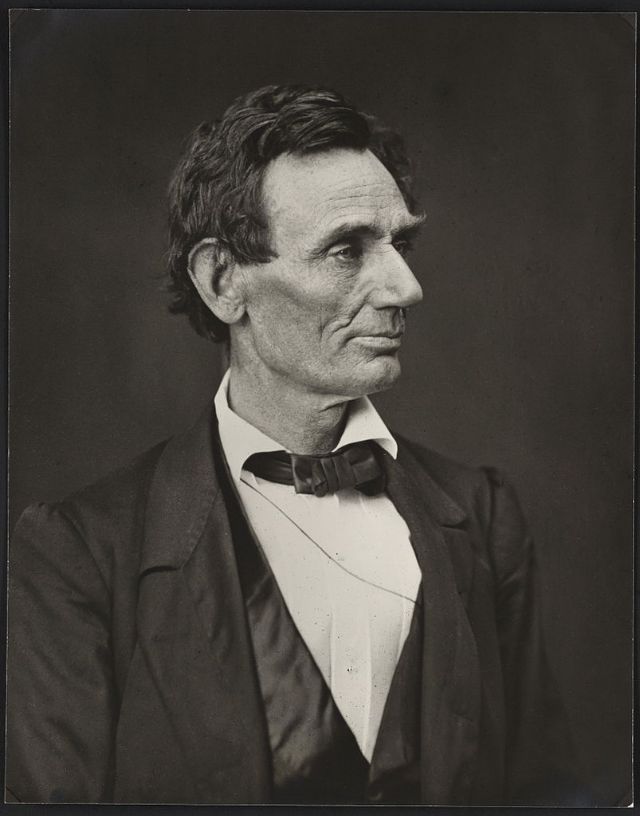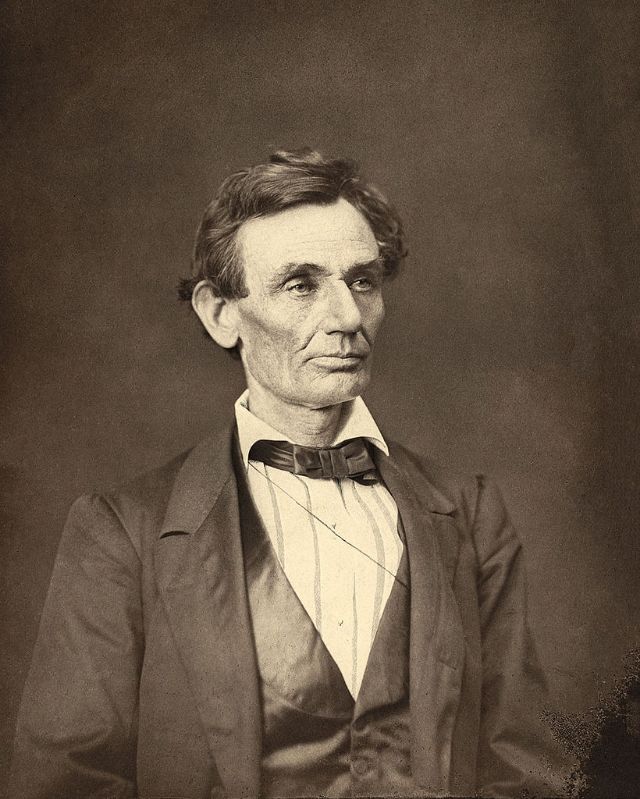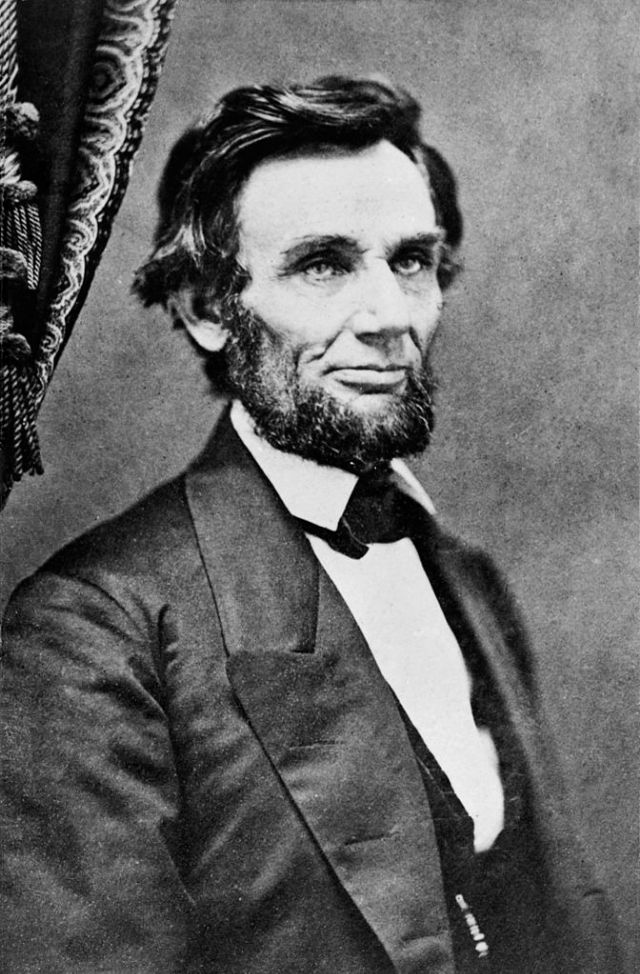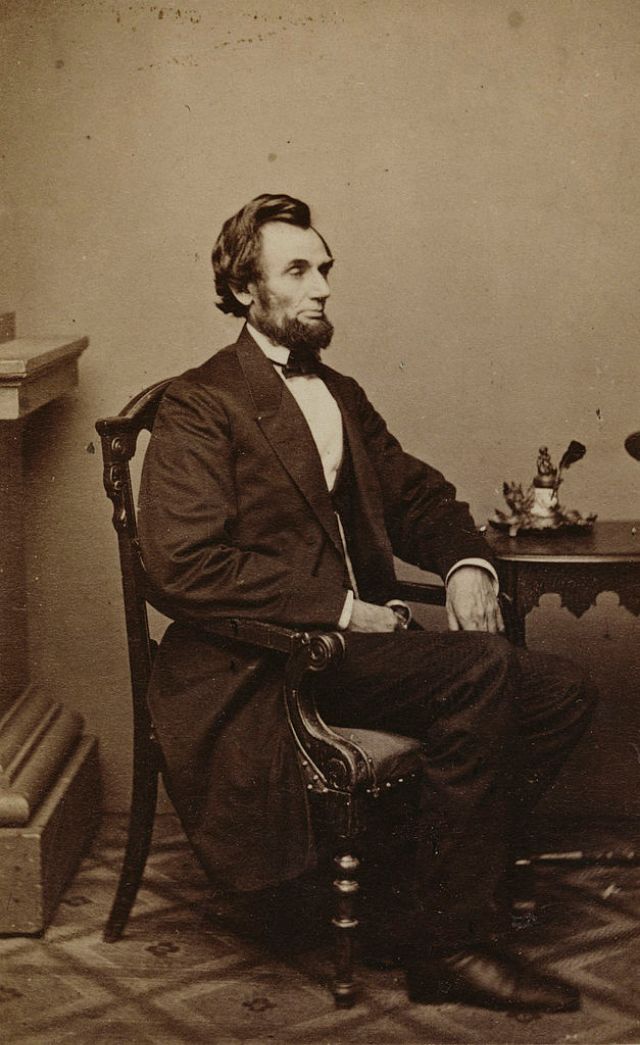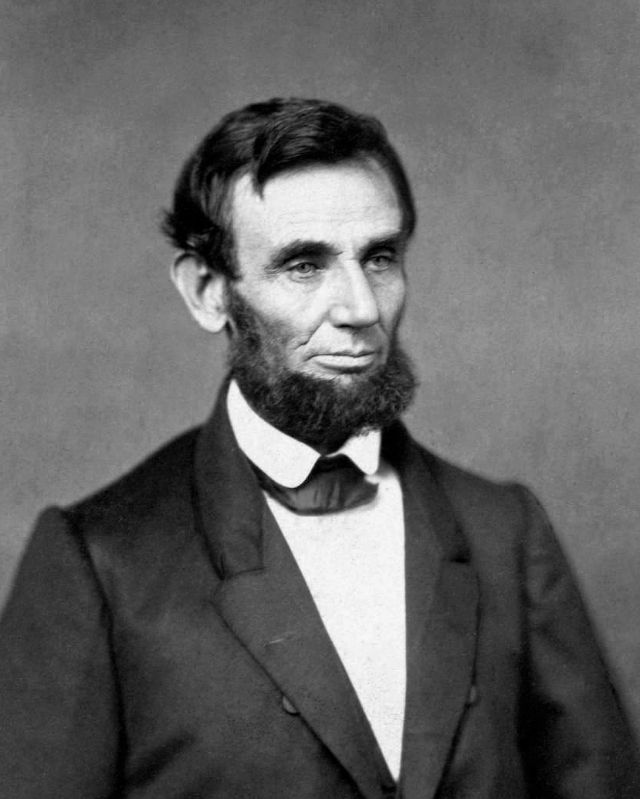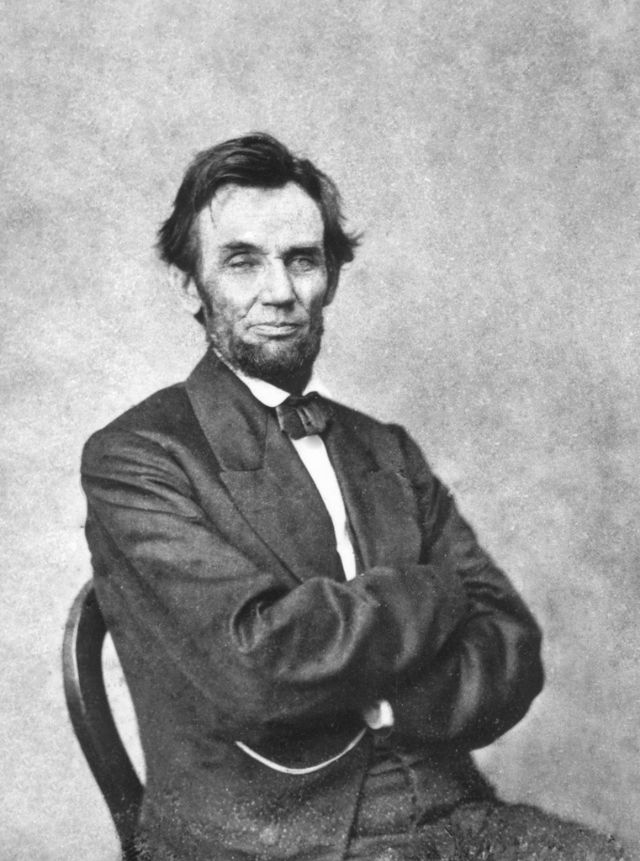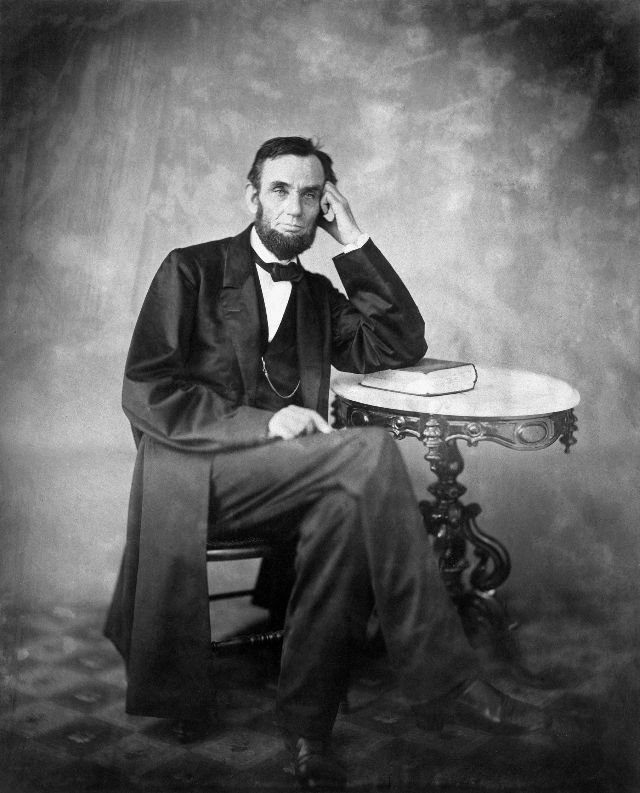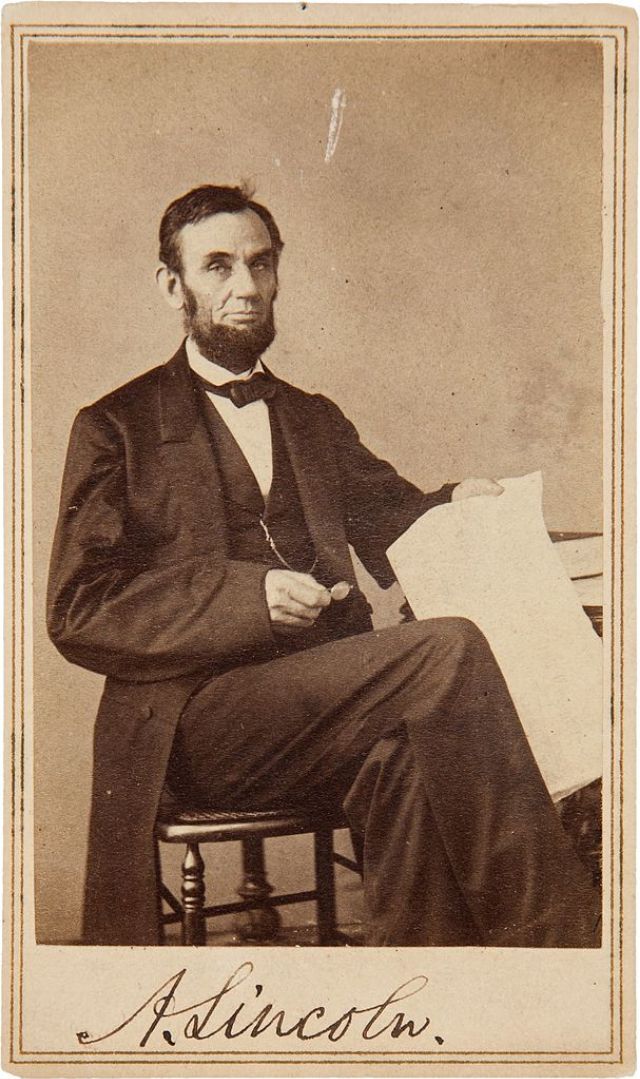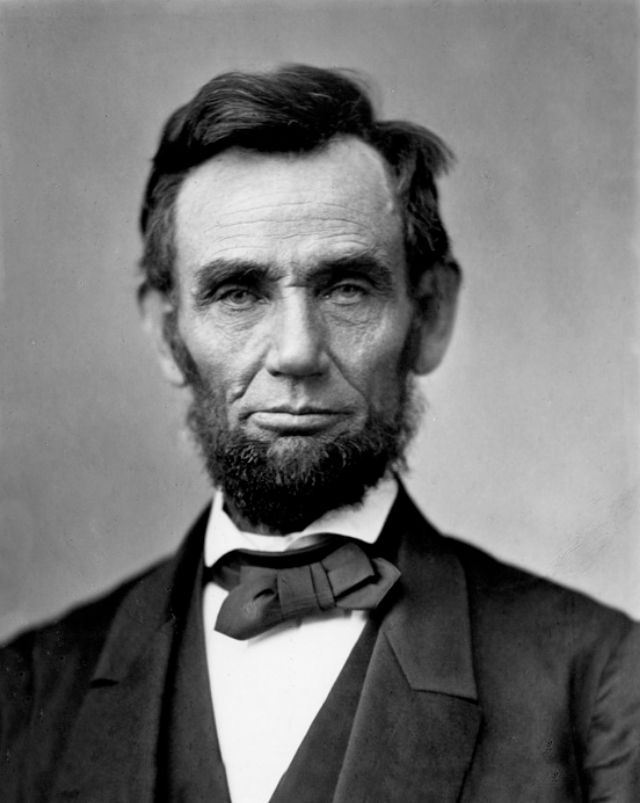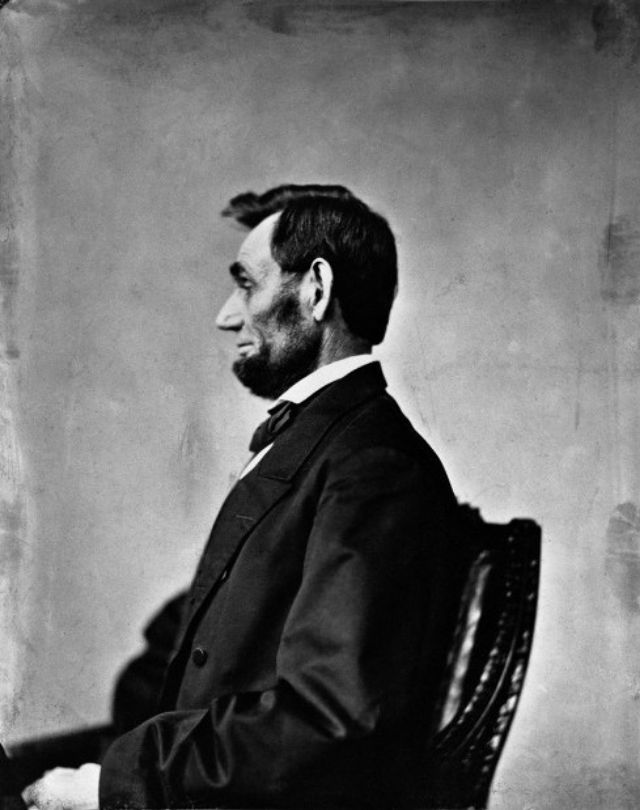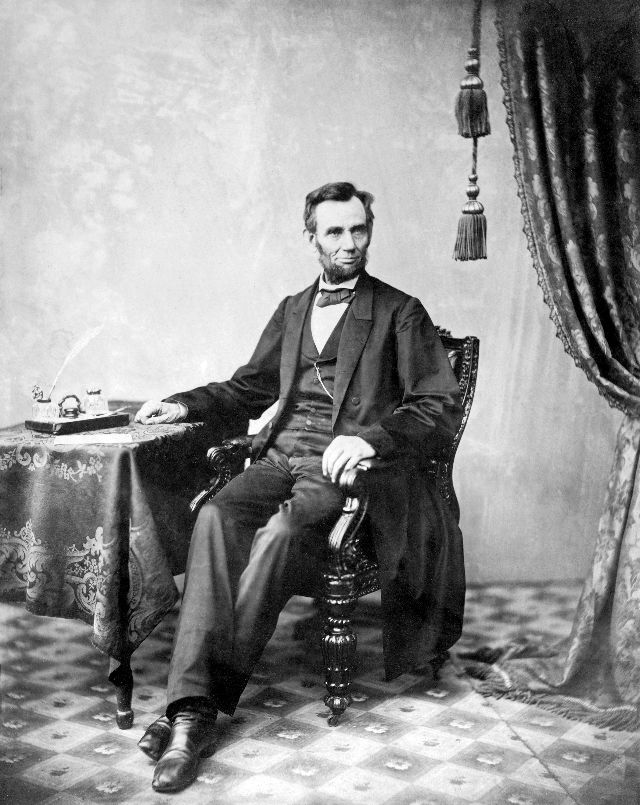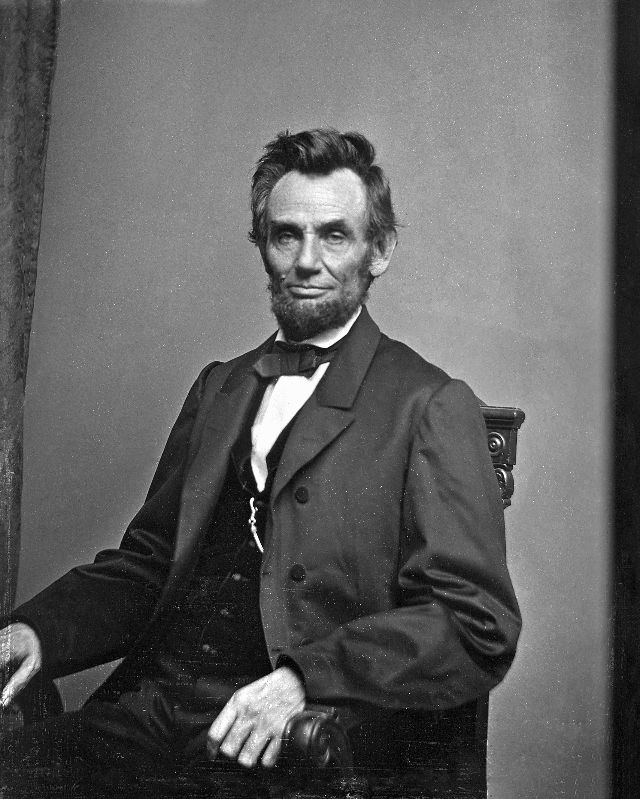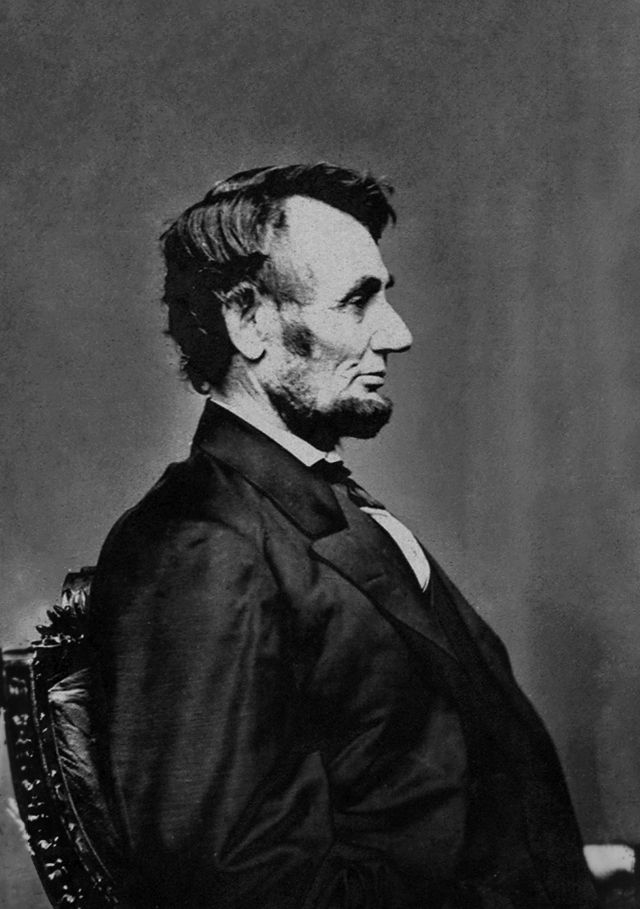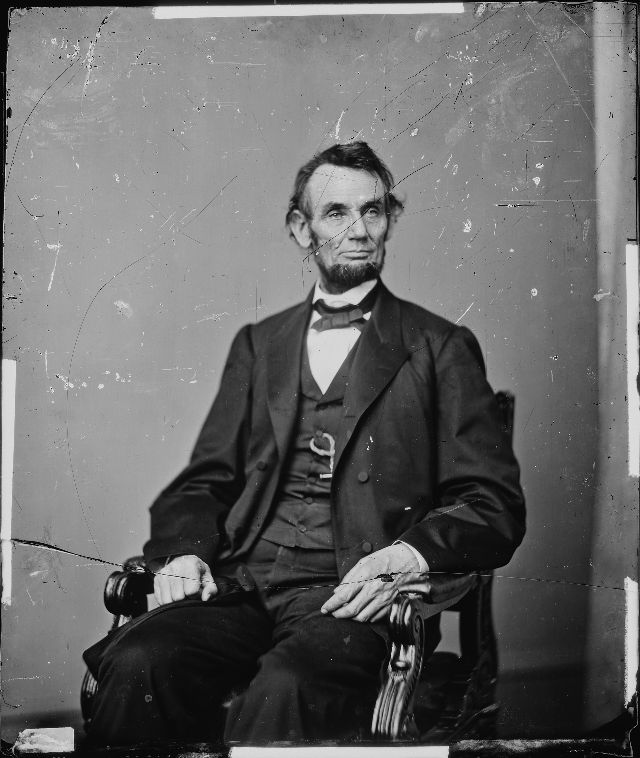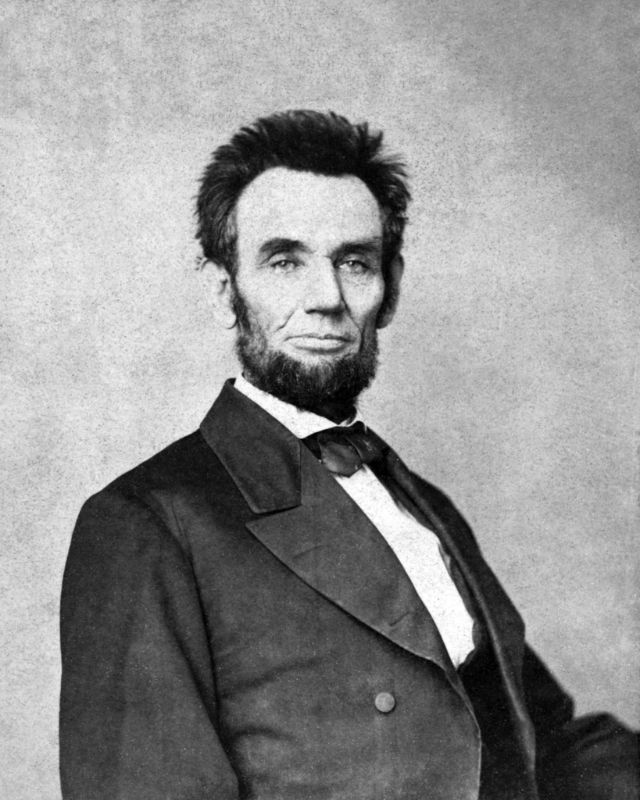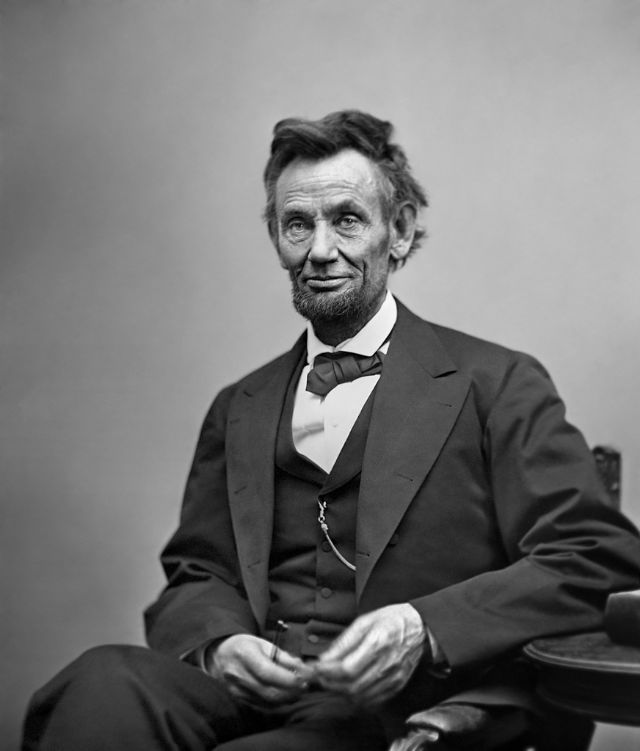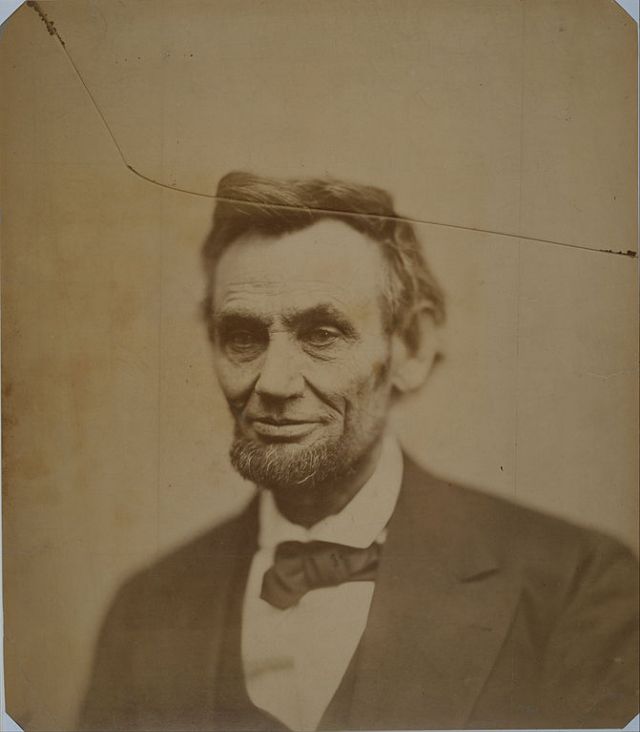Abraham Lincoln, widely revered as one of the greatest leaders in American history, left an indelible mark on the nation during his tenure as the 16th President of the United States. Serving as the first president to be extensively photographed, Lincoln’s images have become powerful visual documents that chronicle his remarkable journey and the turbulent era in which he lived. Recognizing the medium’s potential, Lincoln embraced photography as a means to connect with the American people, allowing them to visualize their leader in an unprecedented manner. With each photographic portrait, Lincoln’s stoic expression, furrowed brow, and distinctive features became etched in the public consciousness, humanizing a figure who held immense responsibility during one of the nation’s darkest chapters. John George Nicolay, Secretary to President Lincoln, famously said “There are many pictures of Lincoln; there is no portrait of him.” The following images are some of the iconic ones that help document his life, from his early years in politics to his rise to the presidency.
1846/1847: By Nicholas H. Shepherd
This daguerreotype is the earliest confirmed photographic image of Abraham Lincoln. It was reportedly made in 1846 by Nicholas H. Shepherd shortly after Lincoln was elected to the United States House of Representatives. Shepherd’s Daguerreotype Miniature Gallery, which he advertised in the Sangamo Journal, was located in Springfield over the drug store of J. Brookie. Shepherd also studied law at the law office of Lincoln and Herndon.
October 27, 1854: By Johan Carl Frederic Polycarpus Von Schneidau
The second earliest known photograph of Lincoln. From a photograph owned originally by George Schneider, former editor of the Illinois Staats-Zeitung, the most influential anti-slavery German newspaper of the West. Mr. Schneider first met Mr. Lincoln in 1853, in Springfield. “He was already a man necessary to know,” says Mr. Schneider. In 1854 Mr. Lincoln was in Chicago, and Isaac N. Arnold invited Mr. Schneider to dine with Mr. Lincoln. After dinner, as the gentlemen were going downtown, they stopped at an itinerant photograph gallery, and Mr. Lincoln had this picture taken for Mr. Schneider.
February 28, 1857: By Alexander Hessler
“I have a letter from Mr. Hesler stating that [Lincoln] came in and made arrangements for the sitting, so that the members of the bar could get prints. Lincoln said at the time that he did not know why the boys wanted such a homely face. Joseph Medill went with Mr. Lincoln to have the picture taken. He says that the photographer insisted on smoothing down Lincoln’s hair, but Lincoln did not like the result, and ran his fingers through it before sitting.” Note by H. W. Fay of DeKalb, Illinois, original owner of the photo. Lincoln immediately prior to his Senate nomination. The original negative was burned in the Great Chicago Fire.
1858: By Roderick M. Cole
“…the photo you have of Abraham Lincoln is a copy of a Daguerreotype, that I made in my gallery in this city [Peoria] during the Lincoln and Douglas campaign. I invited him to my gallery to give me a sitting…and when I had my plate ready, he said to me, ‘I cannot see why all you artists want a likeness of me unless it is because I am the homeliest man in the State of Illinois.’” — R.M. Cole, July 3, 1905 letter to David McCulloch. Lincoln liked this image and often signed photographic prints for admirers. In fact, in 1861, he even gave a copy to his stepmother. The image was extensively employed on campaign ribbons in the 1860 Presidential campaign, and Lincoln “often signed photographic prints for visitors.”
1858: By Unknown Photographer
A Civil War soldier from Parma, Ohio, was the original owner of this portrait, published in the Cleveland Plain Dealer on February 12, 1942, from a print in the Anthony L. Maresh collection. Possibly it is a photographic copy of one of two daguerreotypes, both now lost, taken in Ohio.
May 7, 1858: By Abraham M. Byers
Formerly in the Lincoln Monument collection at Springfield, Illinois. Mr. Lincoln wore a linen coat on the occasion. The picture is regarded as a good likeness of him as he appeared during the Lincoln Douglas campaign.
August 26, 1858: By T. P. Pearson
“Mr. Magie happened to remain over night at Macomb, at the same hotel with Mr. Lincoln, and the next morning took a walk about town, and upon Mr. Magie’s invitation they stepped into Mr. Pierson’s establishment, and the ambrotype of which this is a copy was the result. Mr. Lincoln, upon entering, looked at the camera as though he was unfamiliar with such an instrument, and then remarked: ‘Well, do you want to take a shot at me with this thing?’ He was shown to a glass, where he was told to ‘fix up,’ but declined, saying it would not be much of a likeness if he fixed up any. The old neighbors and acquaintances of Mr. Lincoln in Illinois, upon seeing this picture, are apt to exclaim: ‘There! that’s the best likeness of Mr. Lincoln that I ever saw!’ The dress he wore in this picture is the same in which he made his famous canvass with Senator Douglas.” — J. C. Power, custodian of the Lincoln monument in Springfield.
September 26, 1858 : Attributed to Christopher S. German.
“In 1858 Lincoln and Douglas had a series of joint debates in this State, and this city was one place of meeting. Mr. Lincoln’s step-mother was making her home with my father and mother at that time. Mr. Lincoln stopped at our house, and as he was going away my mother said to him: “Uncle Abe, I want a picture of you.” He replied, “Well, Harriet, when I get home I will have one taken for you and send it to you.” Soon after, mother received the photograph, which she still has, already framed, from Springfield, Illinois, with a letter from Mr. Lincoln, in which he said, “This is not a very good-looking picture, but it’s the best that could be produced from the poor subject.” He also said that he had it taken solely for my mother.” — Mr. K. N. Chapman of Charleston, Illinois, great-grandson of Sarah Bush Lincoln.
October 4, 1859: By Samuel M. Fassett
Lincoln sat for this portrait at the gallery of Cooke and Fassett in Chicago. Cooke wrote in 1865 “Mrs. Lincoln pronounced [it] the best likeness she had ever seen of her husband.”
February 27, 1860: By Mathew Brady
Mathew Brady’s first photograph of Lincoln, on the day of the Cooper Union speech. Over the following weeks, newspapers and magazines gave full accounts of the event, noting the high spirits of the crowd and the stirring rhetoric of the speaker. Artists for Harper’s Weekly converted Brady’s photograph to a full-page woodcut portrait to illustrate their story of Lincoln’s triumph, and in October 1860, Leslie’s Weekly used the same image to illustrate a story about the election. Brady himself sold many carte-de-visite photographs of the Illinois politician who had captured the eye of the nation. Brady remembered that he drew Lincoln’s collar up high to improve his appearance; subsequent versions of this famous portrait also show that artists smoothed Lincoln’s hair, smoothed facial lines, and straightened his subject’s “roving” left eye. After Lincoln secured the Republican nomination and the presidency, he gave credit to his Cooper Union speech and this portrait, saying, “Brady and the Cooper Institute made me President.”
May 9, 1860: By Edward A. Barnwell
Abraham Lincoln was in Decatur to attend the Illinois State Republican Convention. Local photographer Edward A. Barnwell wanted to take a picture of “the biggest man” at the convention and invited Lincoln to his People’s Ambrotype Gallery at 24 North Water Street to pose for this portrait. The next day, after Richard Oglesby introduced the “Rail Splitter,” convention delegates unanimously endorsed Lincoln for President. On May 18 the National Republican Convention meeting in Chicago nominated him as the party’s candidate.
May 20, 1860: By William Marsh
One of five photographs taken by William Marsh for Marcus Lawrence Ward. Although many in the East had read Lincoln’s impassioned speeches, few had actually seen the Representative from Illinois.
June 3, 1860: By Alexander Hesler
Hesler took a total of four portraits at this sitting. Lincoln’s law partner William Herndon wrote of this picture: “There is the peculiar curve of the lower lip, the lone mole on the right cheek, and a pose of the head so essentially Lincolnian; no other artist has ever caught it.”
June 3, 1860: By Alexander Hesler
When Lincoln saw this photograph, along with his side view portrait from the same sitting, he remarked “That looks better and expresses me better than any I have ever seen; if it pleases the people I am satisfied.”
1860: By Unknown Photographer
A study of Lincoln’s powerful physique, this full-length photograph as taken for use by sculptor Henry Kirke Brown, and was found among his effects in 1931.
August 13, 1860: By Preston Butler
The last beardless photograph of Lincoln. John M. Read commissioned Philadelphia artist John Henry Brown to paint a good-looking miniature of Lincoln “whether or not the subject justified it.” This ambrotype is one of six taken on Monday, August 13, 1860 in Butler’s daguerreotype studio (of which only two survive), made for the portrait painter.
February 9, 1861: By Christopher S. German
This photograph was taken two days before he left Springfield en route to Washington, DC, for his inauguration.
February 24, 1861: By Alexander Gardner
Taken during President-elect Lincoln’s first sitting in Washington, D.C., the day after his arrival by train.
March 1, 1861 and June 30, 1861 (between): By Unknown Photographer
The first photographic image of the new president. Remarkably, it is not known where or by whom this portrait was taken; the few known examples carry imprints of several different photographers: C.D Fredericks & Co. of New York; W.L. Germon and James E. McLees, both of Philadelphia. This example has been termed “the most valuable Lincoln photo in existence” and sold at auction in 2009 for $206,500.
1863: By Lewis Emory Walker
Lincoln, seated, with an unbuttoned coat and wearing his standard gold watch chain, presented to him in 1863 by a California delegation.
August 9, 1863: By Alexander Gardner
Lincoln’s “Photographer’s Face”. Per Dr. James Miner, “His large bony face when in repose was unspeakably sad and as unreadable as that of a sphinx, his eyes were as expressionless as those of a dead fish. But when he smiled or laughed at one of his own stories or that of another then everything about him changed; his figure became alert, a lightning change came over his countenance, his eyes scintillated and I thought he had the most expressive features I had ever seen on the face of a man.”
August 9, 1863: By Alexander Gardner
Lincoln holds a newspaper in one hand and his eyeglasses in the other in this autographed Carte de Visite.
November 8, 1863: By Alexander Gardner
This famous image of Lincoln was photographed by Alexander Gardner on November 8, 1863, just weeks before he would deliver the Gettysburg Address. It is sometimes referred to as the “Gettysburg portrait,” although it was actually taken in Washington. As Lincoln had previously done in August 1863, he visited Gardner’s studio on a Sunday afternoon. He posed for several additional portraits during this session.
November 8, 1863: By Alexander Gardner
November 8, 1863: By Alexander Gardner
This image emphasizes Lincoln’s large, lanky legs.
January 8, 1864: By Mathew Brady
Lincoln visited Mathew Brady’s studio in Washington, D.C. on at least three occasions in 1864. Several portraits survive from each session.
February 9, 1864: By Anthony Berger
“The Penny Profile”. Berger was the manager of Mathew Brady’s Gallery when he took multiple photographs at this Tuesday sitting. In 1909 Victor David Brenner used this image and one other similar image from this sitting to model the Lincoln cent.
February 9, 1864: By Anthony Berger
An original cracked plate, just under the size known as “imperial”. The Lincoln portrait on the current United States five-dollar bill is based on this photograph.
February 1865: By Lewis Emory Walker
The short haircut was perhaps suggested by Lincoln’s barber to facilitate the taking of his life mask by Clark Mills. Lincoln knew from experience how long hair could cling to plaster. From an 1865 stereograph long attributed to Mathew Brady, was actually taken by Lewis Emory Walker, a government photographer, about February 1865 and published for him by the E. & H. T. Anthony Co., of New York.
February 5, 1865: By Alexander Gardner
This photograph of Lincoln was made when the burden of the presidency had taken its toll. President Lincoln visited Gardner’s studio one Sunday in February 1865, the final year of the Civil War, accompanied by the American portraitist Matthew Wilson. Wilson had been commissioned to paint the president’s portrait, but because Lincoln could spare so little time to pose, the artist needed recent photographs to work from.
February 5, 1865: Alexander Gardner
The pictures served their purpose, but the resulting painting- a traditional, formal, bust-length portrait in an oval format—is not particularly distinguished and hardly remembered today. Gardner’s surprisingly candid photographs have proven more enduring, even though they were not originally intended to stand alone as works of art.
February 5, 1865: By Alexander Gardner
According to Frank Goodyear, the National Portrait Gallery’s photo curator, “This is the last formal portrait of Abraham Lincoln before his assassination. I really like it because Lincoln has a hint of a smile. The inauguration is a couple of weeks away; he can understand that the war is coming to an end; and here he permits, for one of the first times during his presidency, a hint of better days tomorrow.” (Photo credit: Wikimedia Commons / Library of Congress). Notify me of new posts by email.
Δ Subscribe


